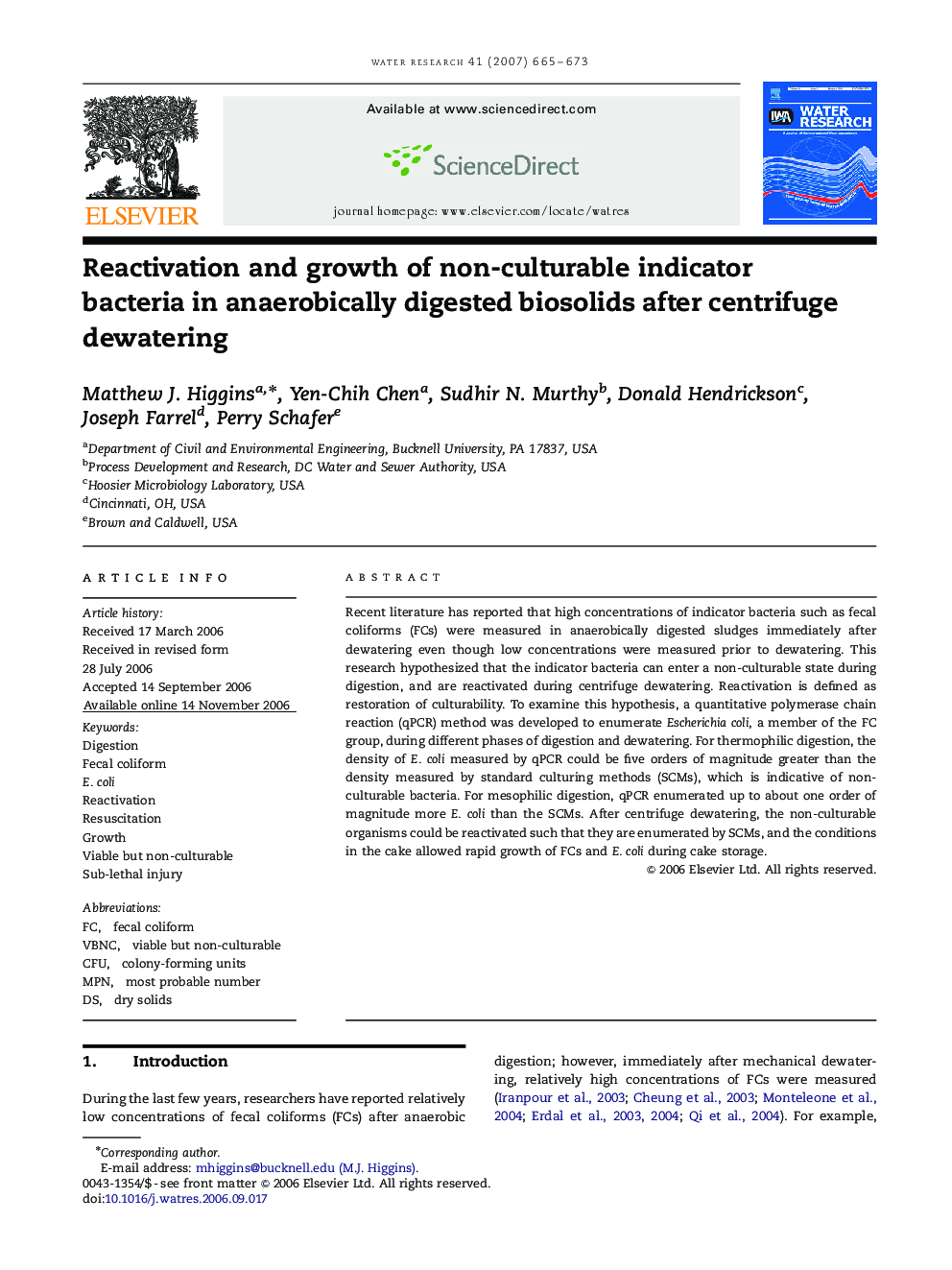| Article ID | Journal | Published Year | Pages | File Type |
|---|---|---|---|---|
| 4486750 | Water Research | 2007 | 9 Pages |
Recent literature has reported that high concentrations of indicator bacteria such as fecal coliforms (FCs) were measured in anaerobically digested sludges immediately after dewatering even though low concentrations were measured prior to dewatering. This research hypothesized that the indicator bacteria can enter a non-culturable state during digestion, and are reactivated during centrifuge dewatering. Reactivation is defined as restoration of culturability. To examine this hypothesis, a quantitative polymerase chain reaction (qPCR) method was developed to enumerate Escherichia coli, a member of the FC group, during different phases of digestion and dewatering. For thermophilic digestion, the density of E. coli measured by qPCR could be five orders of magnitude greater than the density measured by standard culturing methods (SCMs), which is indicative of non-culturable bacteria. For mesophilic digestion, qPCR enumerated up to about one order of magnitude more E. coli than the SCMs. After centrifuge dewatering, the non-culturable organisms could be reactivated such that they are enumerated by SCMs, and the conditions in the cake allowed rapid growth of FCs and E. coli during cake storage.
